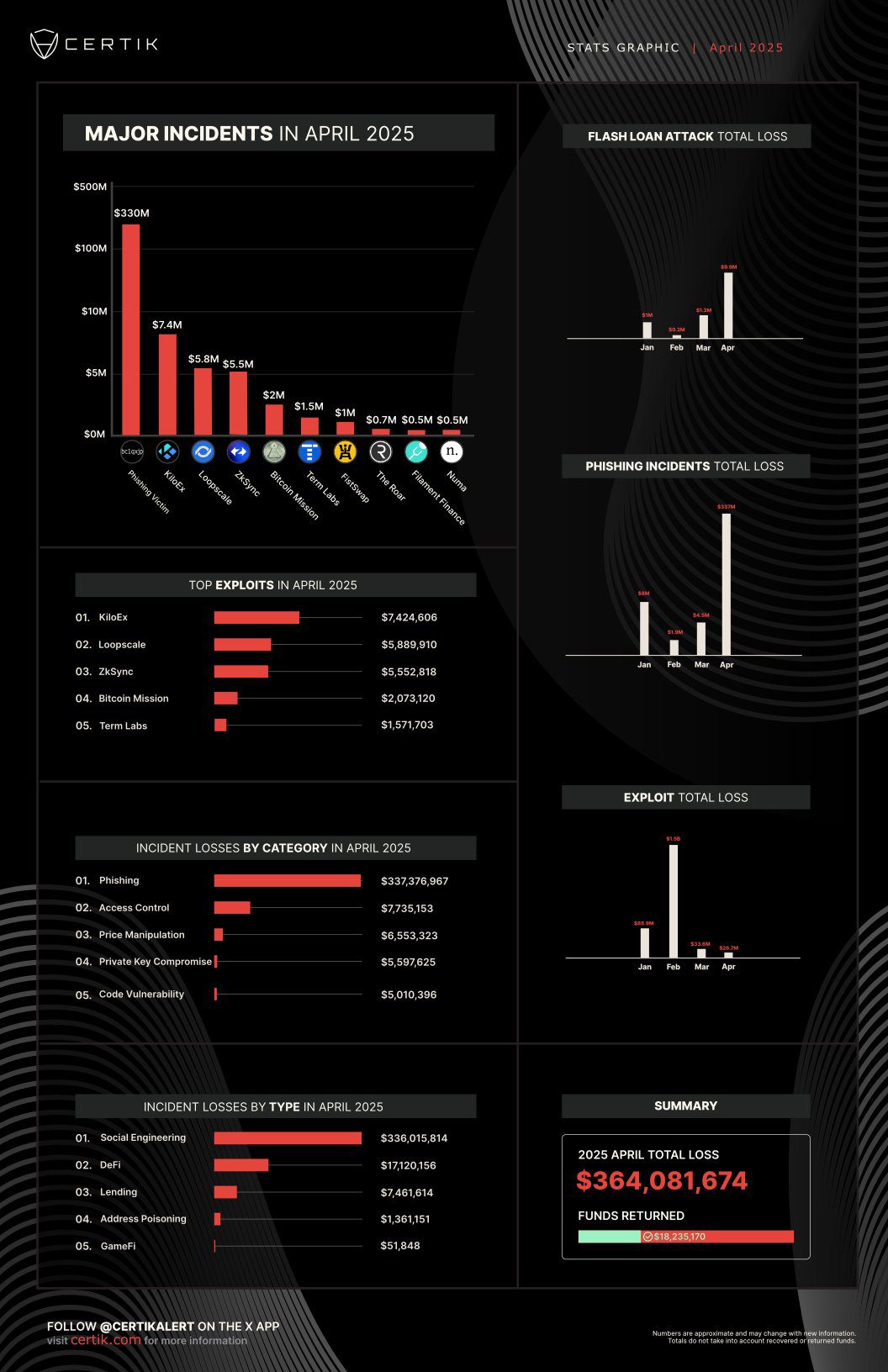April witnessed a dramatic spike in cryptocurrency losses, soaring by 1,163% compared to March, according to blockchain security firm CertiK. The total losses amounted to $364 million, a significant leap from the $28.8 million recorded the previous month. This surge was primarily attributed to a single, large-scale theft targeting an elderly U.S. individual.
CertiK’s report highlights the alarming trend of escalating exploits, hacks, and scams within the crypto space. While some funds were recovered by white hat hackers, the overall impact remains substantial.
Key Findings from CertiK’s April Crypto Losses Report:
- Total Crypto Losses: $364 million, a 1,163% increase from March.
- Primary Cause: A $330.7 million Bitcoin theft from an elderly U.S. individual via social engineering.
- Major Hack: The Bitcoin theft is the fifth-largest crypto hack on record.
- Recovered Funds: Approximately $18.2 million returned by white hat exploiters from KiloEx, Loopscale, and ZKsync exploits.
- Other Significant Attacks: Phishing scams, access control hacks, and price manipulation exploits.

The Anatomy of the Largest Crypto Hack in April
The most significant incident involved an elderly U.S. individual who fell victim to sophisticated social engineering tactics. Hackers managed to steal 3,520 Bitcoin, valued at $330.7 million, directly from their wallet. This incident underscores the increasing sophistication of cybercriminals targeting cryptocurrency holders.
Phishing Scams: A Growing Threat
CertiK identified phishing scams as a major driver of crypto losses in April. These scams often involve deceptive emails, websites, or messages designed to trick individuals into revealing their private keys or other sensitive information. The Bitcoin heist significantly amplified the impact of these phishing campaigns.
White Hat Hackers and Recovered Funds
While the overall losses were substantial, there were some positive developments. White hat hackers played a crucial role in recovering funds from several exploits. For example, decentralized exchange KiloEx had $7.5 million exploited, but the exploiter returned the fund, ZKsync Association recovered $5 million after $5 million was stolen from its airdrop distribution contract and DeFi protocol Loopscale recovered half of the funds stolen from exploit which caused $5.7 million in USDC and 1,200 Solana lost.
Looking Back: Crypto Losses in 2024
While April saw a significant spike, February 2024 still holds the record for the largest crypto losses, primarily due to the $1.4 billion Bybit hack attributed to North Korea’s Lazarus Group. This incident remains the largest crypto hack ever recorded. December 2024 recorded the smallest amount of losses, totaling $28.6 million.
Why This Matters
The CertiK report serves as a stark reminder of the ongoing risks within the cryptocurrency ecosystem. As the crypto market continues to evolve, it is crucial for investors and users to remain vigilant and take proactive steps to protect their assets. This includes:
- Using strong, unique passwords.
- Enabling two-factor authentication (2FA) whenever possible.
- Being wary of phishing scams and suspicious emails or messages.
- Storing cryptocurrency in secure wallets.
- Staying informed about the latest security threats.
Conclusion
The April surge in crypto losses highlights the need for enhanced security measures and increased awareness within the crypto community. By understanding the risks and implementing best practices, individuals and organizations can mitigate the potential for future losses and contribute to a safer and more secure crypto ecosystem.